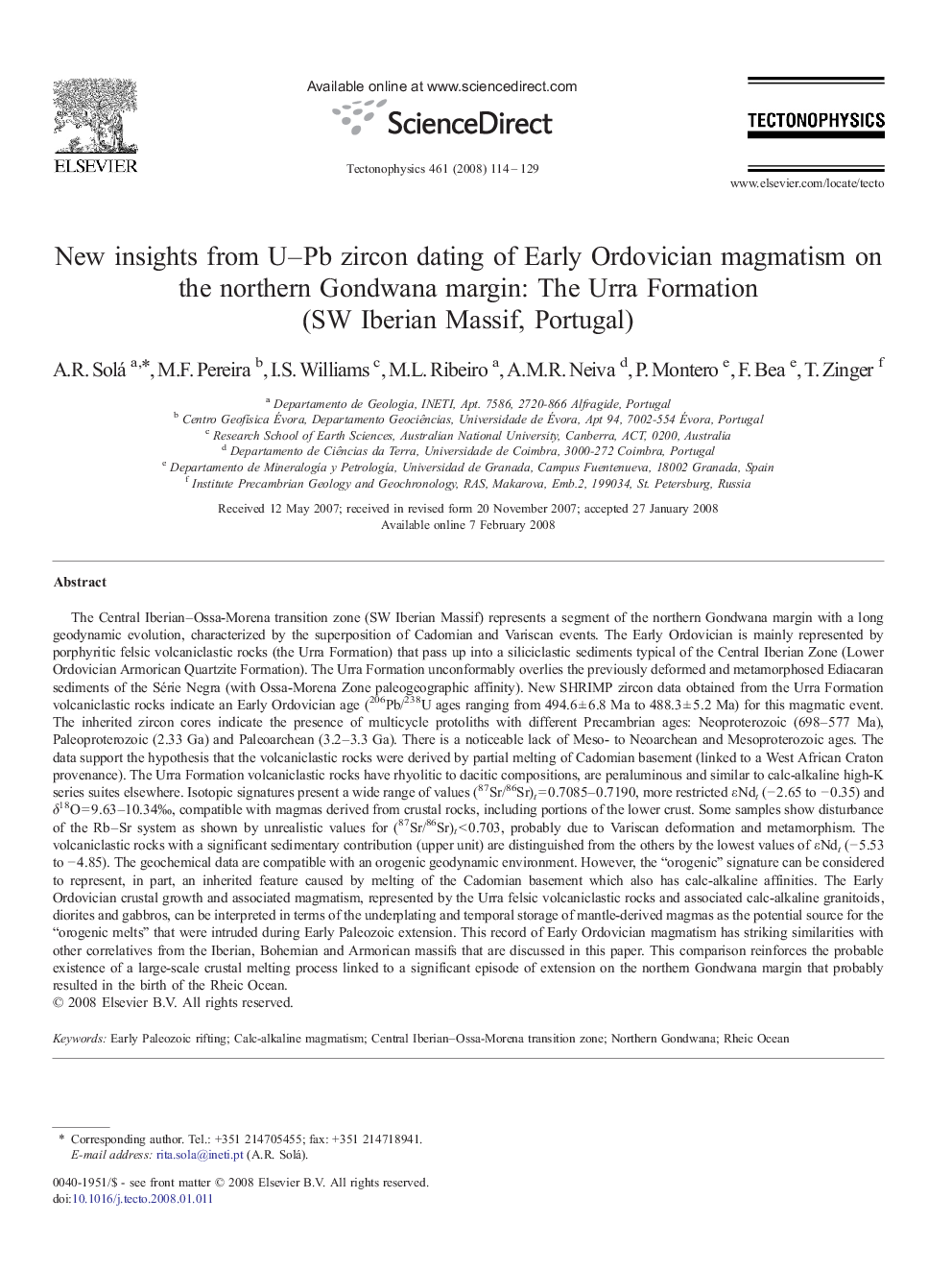| کد مقاله | کد نشریه | سال انتشار | مقاله انگلیسی | نسخه تمام متن |
|---|---|---|---|---|
| 4694178 | 1636904 | 2008 | 16 صفحه PDF | دانلود رایگان |

The Central Iberian–Ossa-Morena transition zone (SW Iberian Massif) represents a segment of the northern Gondwana margin with a long geodynamic evolution, characterized by the superposition of Cadomian and Variscan events. The Early Ordovician is mainly represented by porphyritic felsic volcaniclastic rocks (the Urra Formation) that pass up into a siliciclastic sediments typical of the Central Iberian Zone (Lower Ordovician Armorican Quartzite Formation). The Urra Formation unconformably overlies the previously deformed and metamorphosed Ediacaran sediments of the Série Negra (with Ossa-Morena Zone paleogeographic affinity). New SHRIMP zircon data obtained from the Urra Formation volcaniclastic rocks indicate an Early Ordovician age (206Pb/238U ages ranging from 494.6 ± 6.8 Ma to 488.3 ± 5.2 Ma) for this magmatic event. The inherited zircon cores indicate the presence of multicycle protoliths with different Precambrian ages: Neoproterozoic (698–577 Ma), Paleoproterozoic (2.33 Ga) and Paleoarchean (3.2–3.3 Ga). There is a noticeable lack of Meso- to Neoarchean and Mesoproterozoic ages. The data support the hypothesis that the volcaniclastic rocks were derived by partial melting of Cadomian basement (linked to a West African Craton provenance). The Urra Formation volcaniclastic rocks have rhyolitic to dacitic compositions, are peraluminous and similar to calc-alkaline high-K series suites elsewhere. Isotopic signatures present a wide range of values (87Sr/86Sr)t = 0.7085–0.7190, more restricted εNdt (− 2.65 to − 0.35) and δ18O = 9.63–10.34‰, compatible with magmas derived from crustal rocks, including portions of the lower crust. Some samples show disturbance of the Rb–Sr system as shown by unrealistic values for (87Sr/86Sr)t < 0.703, probably due to Variscan deformation and metamorphism. The volcaniclastic rocks with a significant sedimentary contribution (upper unit) are distinguished from the others by the lowest values of εNdt (− 5.53 to − 4.85). The geochemical data are compatible with an orogenic geodynamic environment. However, the “orogenic” signature can be considered to represent, in part, an inherited feature caused by melting of the Cadomian basement which also has calc-alkaline affinities. The Early Ordovician crustal growth and associated magmatism, represented by the Urra felsic volcaniclastic rocks and associated calc-alkaline granitoids, diorites and gabbros, can be interpreted in terms of the underplating and temporal storage of mantle-derived magmas as the potential source for the “orogenic melts” that were intruded during Early Paleozoic extension. This record of Early Ordovician magmatism has striking similarities with other correlatives from the Iberian, Bohemian and Armorican massifs that are discussed in this paper. This comparison reinforces the probable existence of a large-scale crustal melting process linked to a significant episode of extension on the northern Gondwana margin that probably resulted in the birth of the Rheic Ocean.
Journal: Tectonophysics - Volume 461, Issues 1–4, 1 December 2008, Pages 114–129